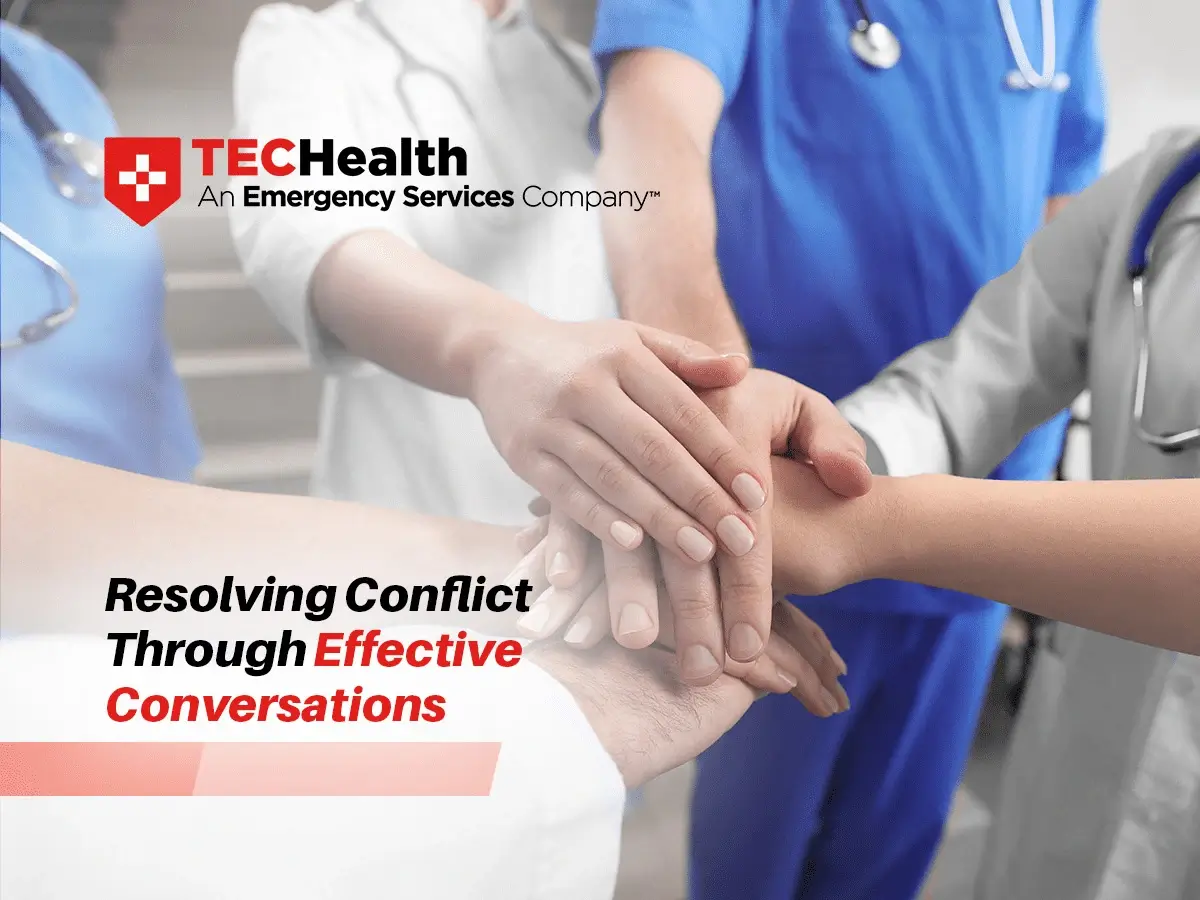
Part of building relationships is learning how to effectively deal with conflict when it arises – whether it’s between two people or among an entire team. In healthcare, the stakes of effectively managing conflicts are especially high as not doing so can lead to higher staff and physician turnover, and burnout and impact patient safety.
Regardless of who the conflict is between—physicians and nurses, physician and physician, or clinical staff and management—communication and emotional intelligence are essential to de-escalating and bringing about a resolution. Moreover, these skills can add value to working relationships making them even stronger and lessening the chances of burnout and future conflict.
Having The Conversation
Being able to openly address conflicts and concerns with and among your team relies on leaders’ ability to bring compassion and honesty to difficult conversations – whether it is a concern you need addressed or an issue that has been brought to you to help resolve.
Sharing your concerns up or down the chain of command:
- Be direct about having a concern but respectful of the person’s time. (“I need to share a concern with you. Is now a good time to talk or can we schedule a time soon?”)
- Base the conversation on facts as much as possible before sharing opinions or feelings on the matter. (“Here are the facts of the issue as I understand them…”)
- Share your interpretation and feelings based on the facts. (“Because of this, I’m led to think…” and/or “I feel…”)
- Be concise with your feelings/emotions. It should be a word and not a sentence. (e.g., sad, disappointed, confused, etc.)
- Take as much ownership as you can. (“I know I could have done better/helped avoid this by…”)
- Have an idea of the outcome/resolution you would like to see before even having the conversation. But be prepared to change or shift based on the feedback during the conversation. (“What I’d like to see happen to resolve this is…)
Being an effective conflict solver for concerns brought to you:
- Listen to the concern and then paraphrase it back to the speaker. (“I want to make sure I understand you. You are concerned that…”)
- Give the individual a chance to affirm or correct. (“Did I get that right or did I miss anything?”)
- Ask if there is anything else the individual may want to share as honest conflict conversations take courage and the concern may be part of a broader issue. (“Is there anything else you think I should know?”
- Thank the person for sharing and acknowledge it may not have been easy (if appropriate).
- Share your reaction directly. (“My thoughts/feelings on your concern are…)
- Offer what you can do to help resolve the concern/conflict (“Here is what I can do to address this issue now…”), or if you need time, share a deadline for when you will get back to them. (“I need some time to look into this to see what we can do, but I will let you know what I can do by…”)
- If you need something from the person, share that. (“What I would like you to do is…”)
Using this approach is not only good communication but builds emotional intelligence and resilience among teams.
Beyond Words
While talking it out is key to resolving, having an effective and calm conflict conversation also relies on non-verbal cues as both a speaker and listener.
- Watch the body language of others to gauge emotion
- Be aware of your facial expressions and nod as appropriate
- Maintain a comfortable amount of eye contact and distance
- Be cognizant of your volume
- Always be aware of the emotions that arise during conflict
- Stay focused and in the present
Being equipped to address conflict comes with the territory of good leadership. It’s also important, though, to be selective when bringing up concerns and initiating conflict conversations as not every concern may need to be addressed.




